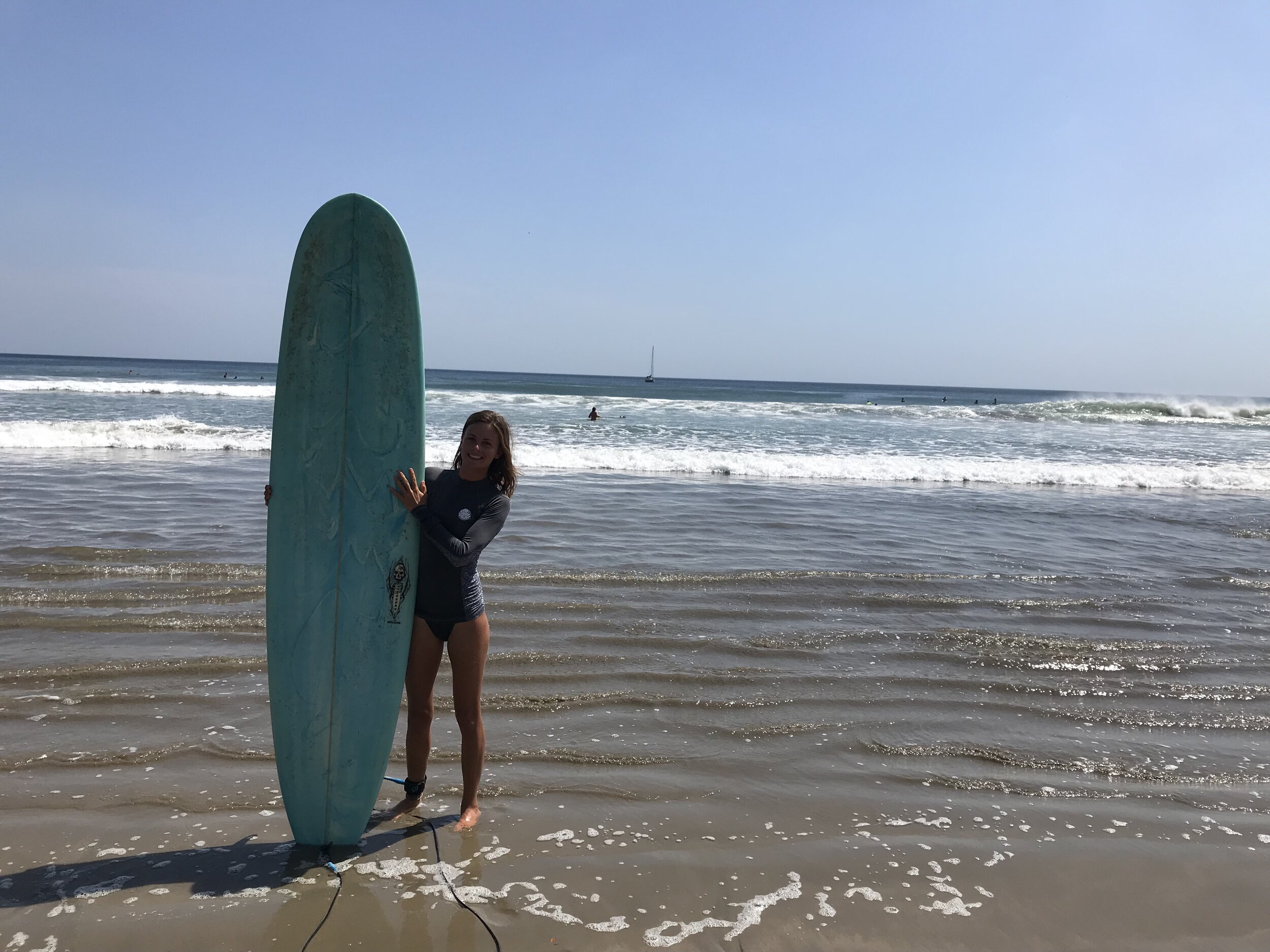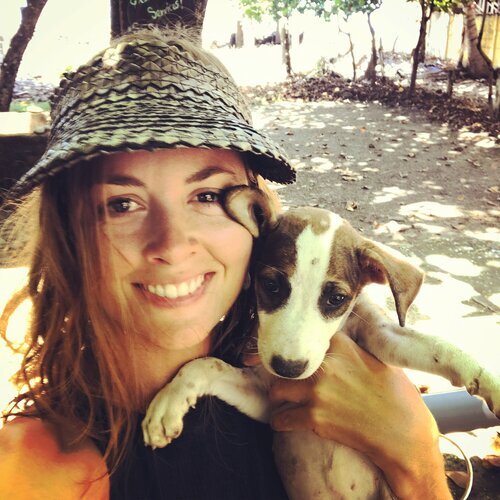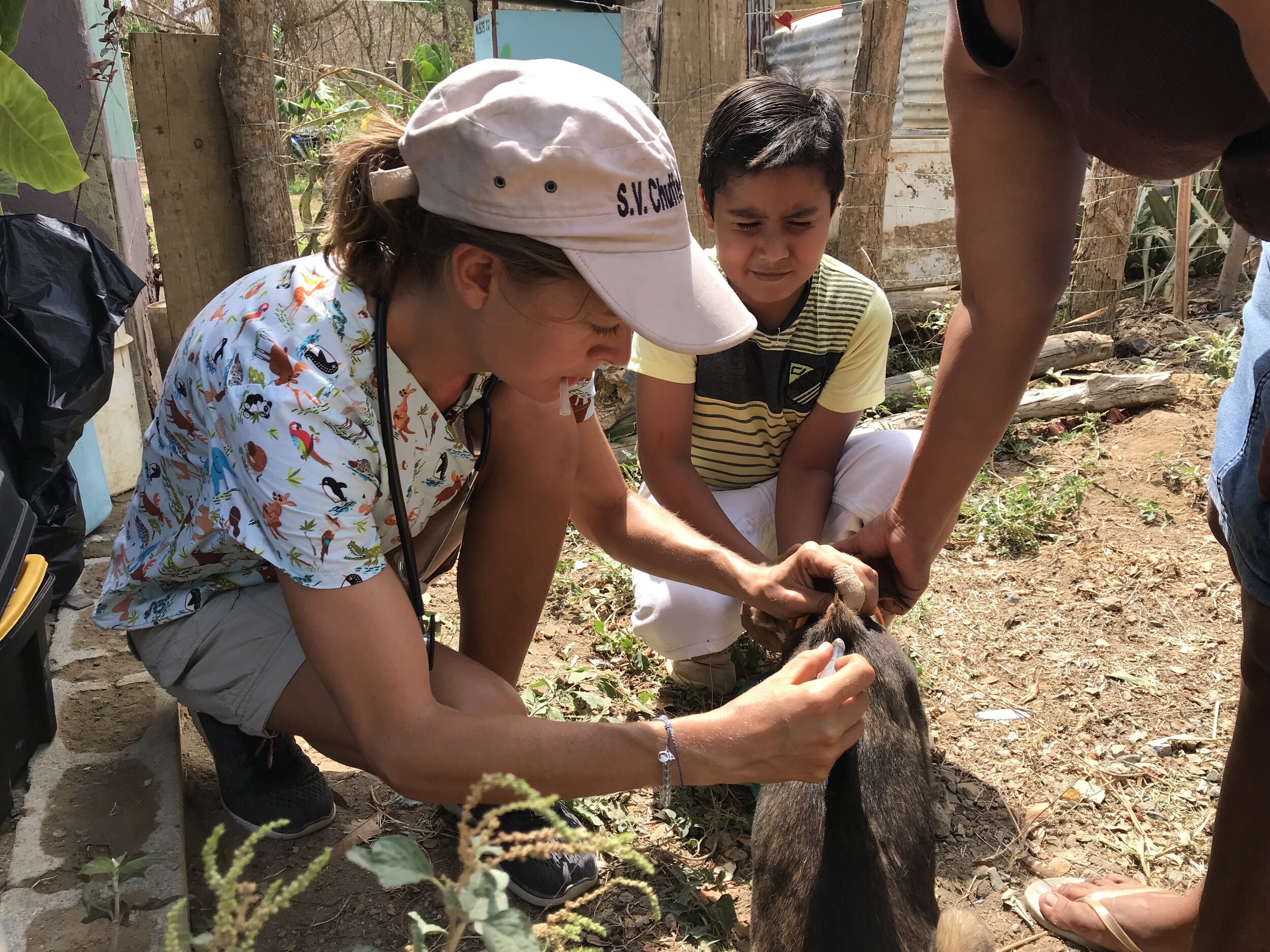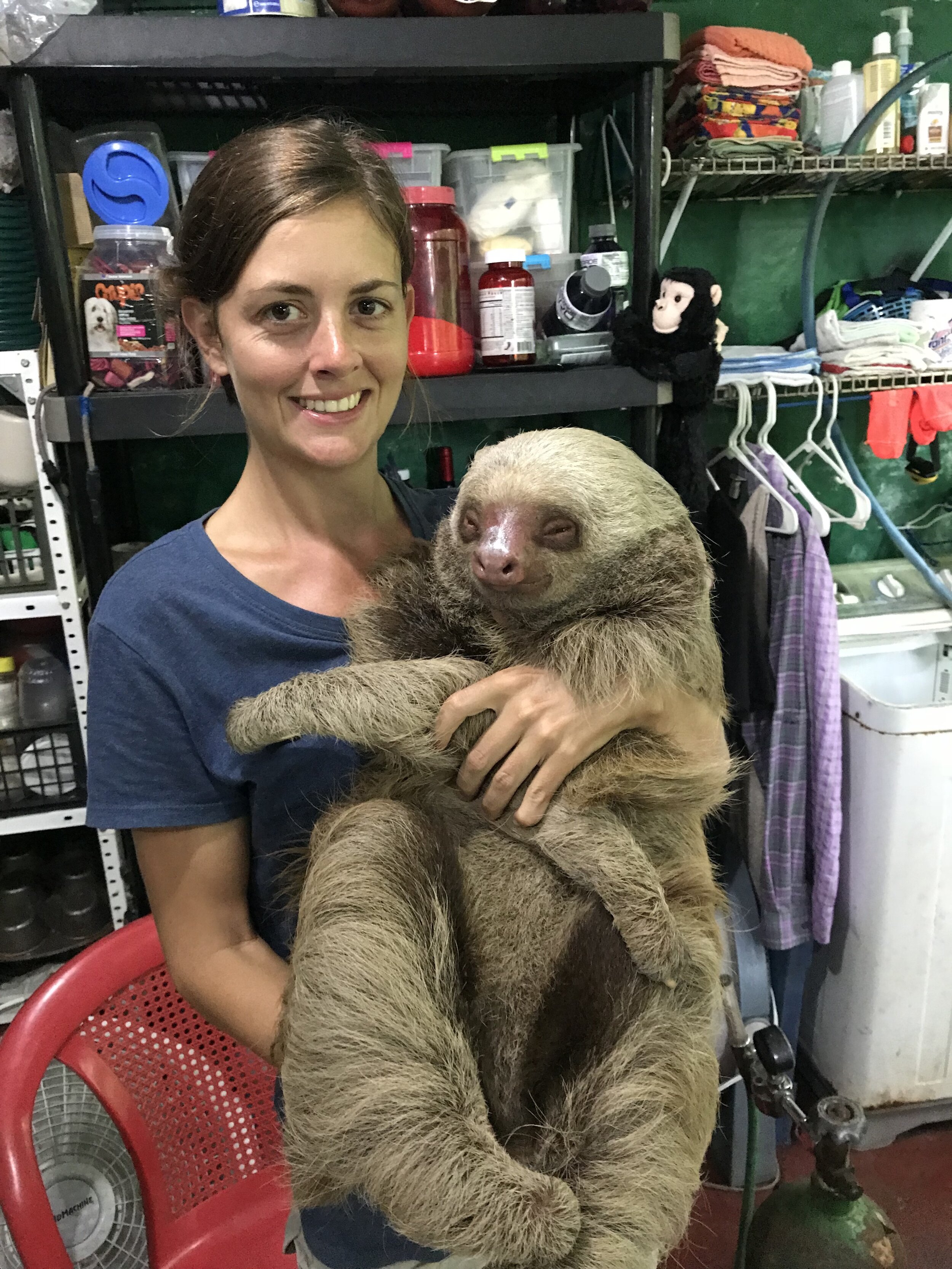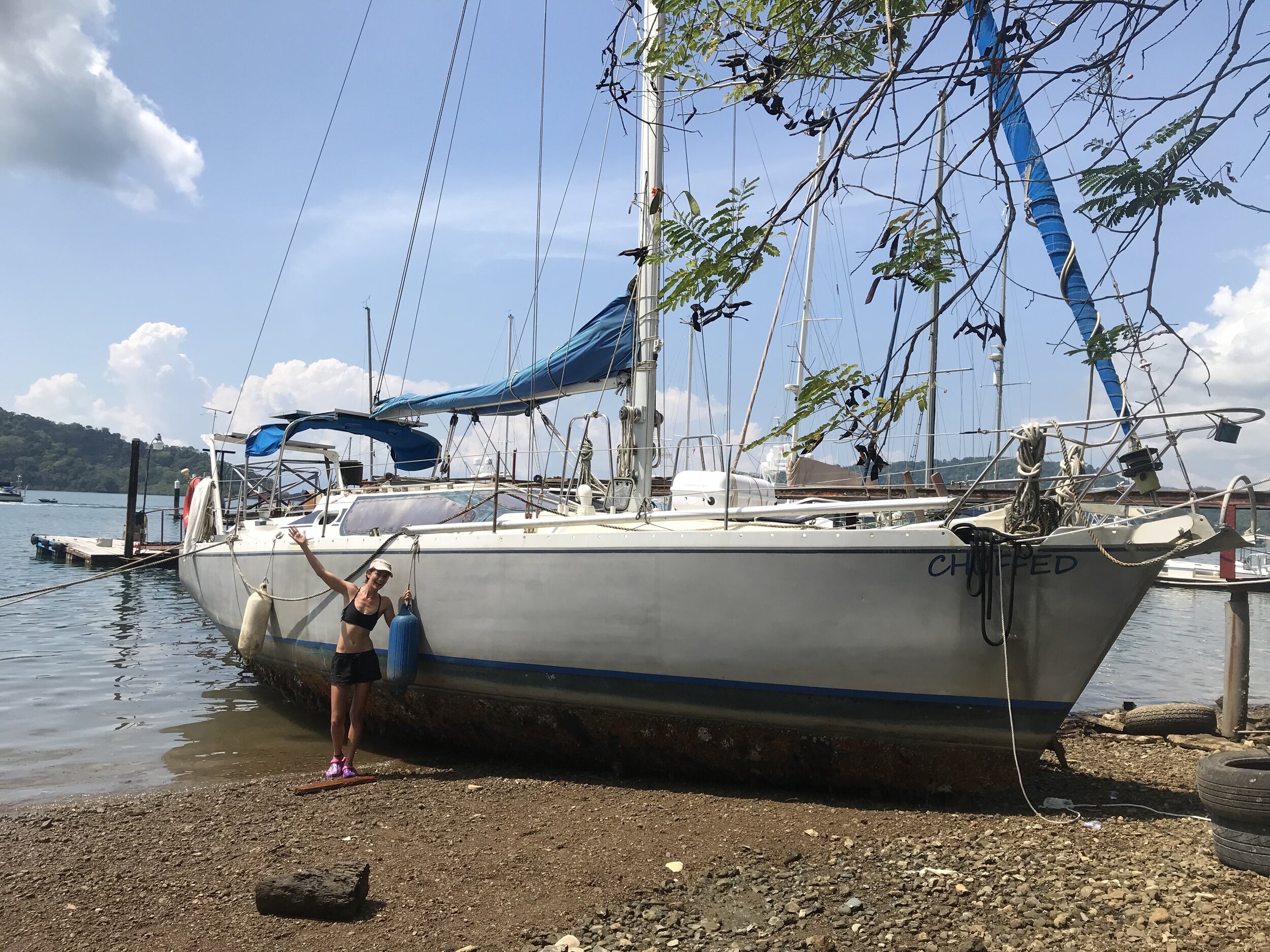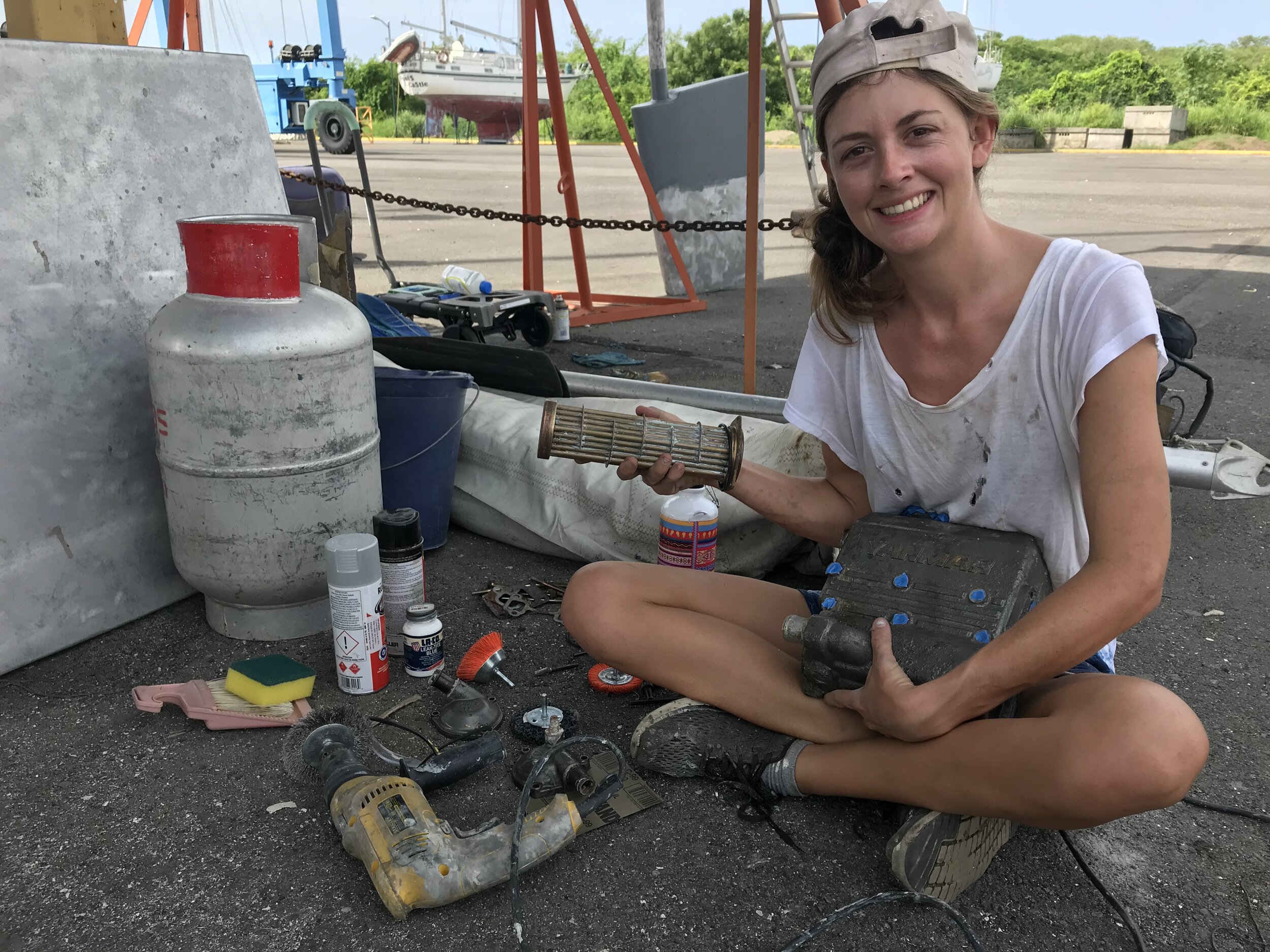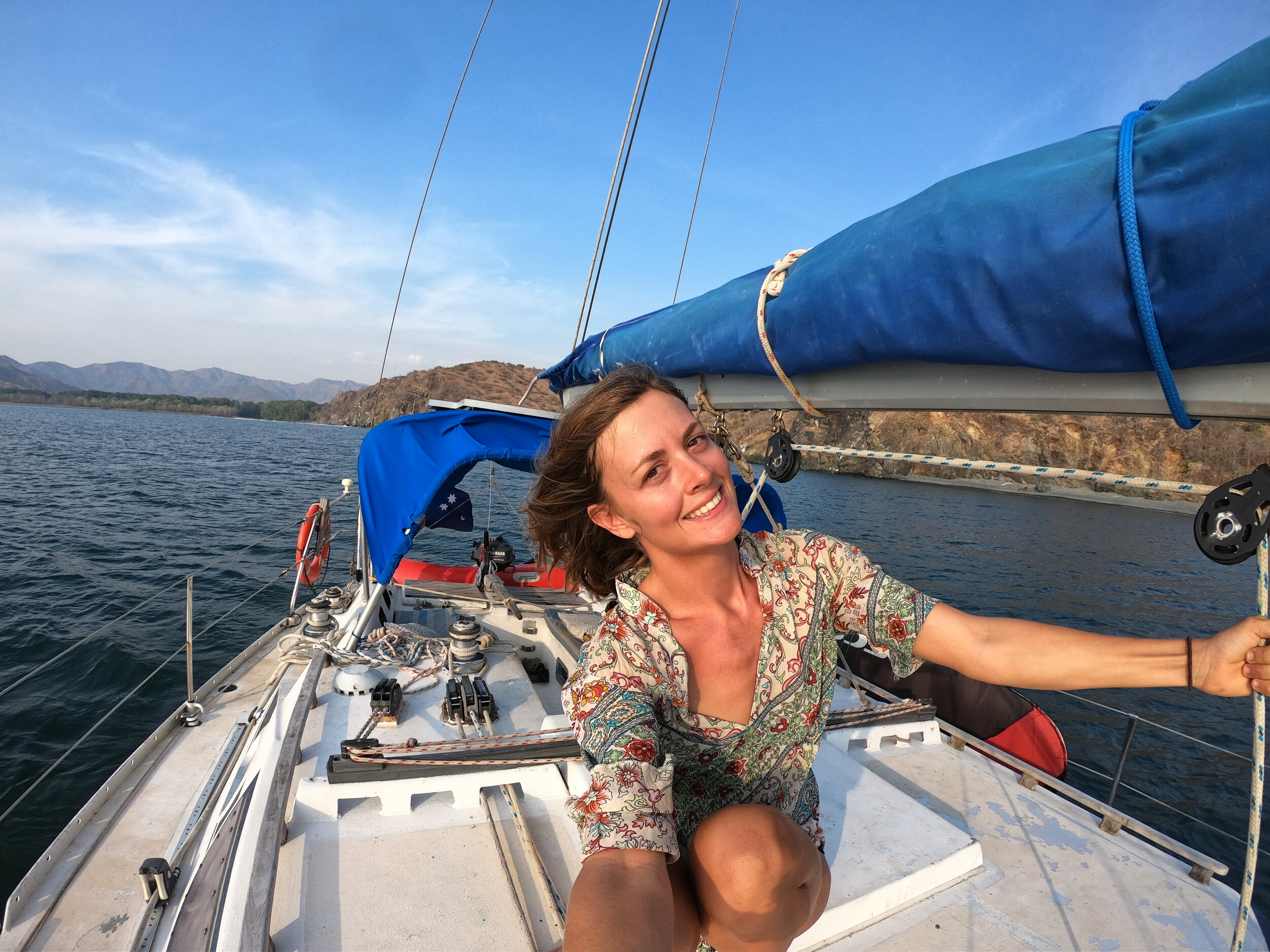Why Dr. Sheridan Lathe is sailing into adventure as the Captain of “Chuffed”
Dr. Sheridan Lathe, known more by the moniker “Dr. Sheddy” is a native of Queensland, Australia and a graduate of James Cook University. Following graduation, she worked as a small animal veterinarian in rural Queensland and later as a wildlife veterinarian in South Australia where she picked up some unusual skills, including how to detect sexually transmitted disease in koalas, fix fractured turtle shells and how to navigate the world of wildlife rehabilitation and release.
Her life took a turn a few years later when she got her dream job, working in China to rescue Asiatic Black Bears from the cruel bear bile trade.
A few years later, she found herself married to a man who was keen on sailing and she soon grew to love life on a boat. Although the marriage didn’t work out, sailing did, and sailing grew into a passion that shaped her future.
As luck would have it, she purchased the “Chuffed” -a 37ft Aluminium Hull sail boat that was built in 1990. Aboard Chuffed, Dr. Sheddy sails around the world, and is lucky enough to combine her many passions of travel, surfing, sailing and animal care into an amazing adventure that she hopes can help inspire people and change the world one community at a time.
Through her non-profit, Vet Tails that she founded in 2017, she sails to areas in need and offers free veterinary care and education to the communities and animals that need it most.
We caught up with this incredible veterinarian to find out more:
How I like to start my day:
I like to wake up to watch the sunrise, which is usually around 6:00 am. I like to enjoy a really burning hot cup of English breakfast tea with a dash of honey. I drink my tea slowly waking up, watching the ocean and the scenery of our latest anchorage wake up around me. For breakfast, I usually have oatmeal with fruit and Greek yogurt. Afterwards, I will go a swim or surf in the ocean depending where we are anchored. After a quick rinse in the solar shower, I am ready to start the day.
My “average” day:
My average day can vary based on the weather, the country I am in, the state of animal health in the area and which part of the boat has decided to break that day, but I will try to give you an idea of a 'normal day'. While there really is no such thing as a normal day when you live on a boat, some days you're scrambling try to get out of a storm, some days you are sailing to the next destination with dolphins at the bow, and others I am fighting with the little engine on the dingy so we can get to shore on time.
We head to shore early to begin animal work before it gets too hot, whether that be a spay and neuter campaign or treating individual cases. All the veterinary work we do is done for free, or at a very low price like $2 an animal to encourage owners to have pride and responsibility for their pet. Generally that is all people can afford in the remote communities we service. We also spend a lot of time talking to the locals, to find out what they feel they need, what the level of animal health care is in the area and to get them involved in our campaigns. We have had a lot of fun getting to know the people in the communities we visit as well.
What I do for lunch:
Although, I usually eat lunch on the boat, I especially enjoy the special treat of being in a slightly bigger town and being able to go out for lunch. Lunch is one of the few meals you can enjoy in a restaurant when you live on a boat, going out for dinner is often a bit risky because it means you're finding your way back out the boat in the ocean in the dark. My go to lunch meal is veggie burritos.
How I spend my afternoons:
We tend to spend the afternoons doing boat work, which can include fixing the engine, examining the sails or plumbing a new pipe. We do all the work ourselves, and after many years of being a sailboat owner, I have become a master of it all. A diesel engine's anatomy isn't so different from a dogs!
I also use the afternoons to re-stock the boat, getting groceries is quite the task when you live onboard. To avoid having to go to shore too frequently we will buy enough for an entire week in one go, and in most of the places we visit that includes having to refill giant jugs of water.
In our little 6 foot dinghy, with two people a week of groceries and water, it can be pretty comical getting back out to the boat, especially if there are some waves... I have capsized before coming back from shore and lost most of my groceries.
How I spend my evenings:
My evenings, if the weather is calm, are very relaxing. I love to listen to music, read books, watch movies, or do yoga. My partner and I usually eat alone because the anchorages we visit are remote and not often frequented by other boats.
Our meals have to be boat friendly - it isn't always easy cooking in rolling seas with only a small stove that also moves around a lot! Fresh caught fish and pasta are my two favorite meals and most common dinner meals. I get lucky when I can catch yellowfin tuna, mackerel or snapper. Sometimes, all I catch is jack fish – which are usually thrown back in by the snobs of the fishing world, but as a hungry sailor, I will take what I can get.
My nights:
I go to bed early to preserve solar power. It is amazing how if you live mostly outside your body just gets accustomed to getting up with the sun and going down with it too. I am often asleep by 9:00 pm each night.
In a gentle anchorage I sleep like a baby on the boat, however we have been in seas so rough that the walls have fallen off the sides overnight, so it isn't always a restful evening.
What I do for fun
My partner and I love to surf, I find it meditative, and he loves the adrenaline rush. It keeps us strong and connected to the ocean even more than we already are. Every opportunity we get we hunt new waves and surf, surf, surf! I also enjoy doing yoga, painting, and meditating.
Living on a boat, and being exposed to the levels of poor animal welfare we see in remote areas of Central America, can be really draining sometimes. So, we are very careful to recharge our batteries and look after ourselves by doing relaxing things that we love as often as possible. We also spend a lot of time sailing, obviously!
The biggest problems facing the veterinary profession:
I think the biggest problem in the veterinary profession is burn out, whether that be compassion fatigue, physical exhaustion or becoming mentally drained. I absolutely love being a vet, it has always been my dream and my passion, but working in general practice can be so hard. You are working for a business, where at times it feels the money a client has is more important than their pet, you are working incredibly long hours doing a job that takes everything out of you - it is hard physical, emotional and mental work! I think the hours veterinarians work and the culture of veterinary medicine being a business is harming our vets.
I think we are seeing more people leave the profession and falling out of love with it- which saddens me. Lighter work hours, the ability to take on charity cases, a focus on continued education within the clinics and more flexibility, I think, could make the profession better for us all.
Who I will be in ten years:
Oh ten years... well ten years ago I wouldn't have seen myself living on a boat... so who knows!!! But I would love to have a bigger boat that can take veterinary volunteers on a dream vacation helping animals, sailing, connecting with nature and re-connecting with their love for the job... or perhaps I will have found my forever home and set up a charity clinic by then with the same goals just without the boat. We will see, for now I am very happy doing what I do and seeing where the wind takes me!
Want to see more? Follow the Incredible Dr. Shedddy on Youtube.


